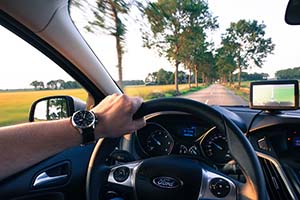Car Insurance for Low Income Family and Government Assistance Program
Free Car Insurance Comparison
Compare Quotes From Top Companies and Save
Secured with SHA-256 Encryption
The cost of living in the United States is gradually rising, and if you are among the many families earning an annual income that is less than $40,000, then you might find it hard to stretch your budget to include car insurance premiums.
So, how does a low-income family can afford an auto insurance or the government has any special assistance program for them?
Facts & Numbers On Income Based Car Insurance:
In the past five years, the premium rates have been constantly on the rise and at a rate of 10% to 12%. And while that has been happening, the minimum wage has stagnated at $7.25 per hour which totals to $15,000 per annum.
Note that…

The consequences of driving an uninsured vehicle are far more costly than the mortgage payments you’re trying to clear. Individuals caught and found liable in accidents can face jail time, license suspension, fines, lawsuits, property damages and medical bills. Simply put, paying for an insurance policy is easier said than done for families without financial restrictions.
Why Are Some Drivers Uninsured in Some States?
The Consumer Federation of America revealed that the five largest insurance providers; Progressive, Allstate, Farmers, Geico and State Farm do not offer insurance policies under $500 per annum for individuals living in low-income areas. The high insurance premiums deny low-income families and households the economic opportunity and that explains why many low-income drivers in the U.S. prefer driving without an insurance coverage.
For instance, the average annual premium in some states such as Louisiana, Kentucky, Maryland, and Mississippi is $2283, $1885, $2223 and $1690 respectively. In Virginia, the average annual premium is $2737, which is way too high for a low-income household.
This is quite interesting that…
Despite the high insurance policy rates, the Insurance Information Institute argues that the insurance providers are not intentionally targeting the low-income earners but rather most of their rates are normally affected by risk factors such as accidents, repair costs, theft and car usage, all of which are normally higher in low-income households. It is this unfair pricing of insurance premiums that some states have decided to fund government auto insurance programs for the low-income residents.
What is Government Car Insurance?
The aim of govt car insurance programs for poor people is to keep roads secured and drivers covered not only in the neighborhoods but also in the entire state. Government assistance car insurance might be a good option for the low-income families or people with disabilities and are sponsored by local or federal governments.
Currently, there are only 4 states in the U.S. that offer low-income auto insurance programs. However, it is important to note that policies are developed and altered every day so it is important to contact a local DMV to inquire whether your state offers low-cost insurance or financial assistance.
Here is a breakdown of the low-income car insurance programs in the 4 states.
California Low-Cost Auto Insurance
California’s low-cost auto insurance which was passed in the year 1999 offers liability coverage for the low-income families that have had good driving records in the state. The insurance coverage limits set by this program are way lower than the state’s standard minimum requirements and as a result, drivers who go for this program are exempted from meeting the state’s requirements.
To qualify for this insurance program, you must:
- Meet the income eligibility requirements: In most cases, income eligibility depends on the number of individuals in your household and combined income of all members.
- Have a clean driving record
- Have attained a minimum of 19 years
- Be in possession of a valid driver’s license
- Own a car valued less than $20,000 and have no unpaid loans.
Special Automobile Insurance Policy (New Jersey)
This low-income auto insurance program is meant for medical coverage alone. This policy covers emergency treatment after a car accident and treatment of fatal spinal cord and brain injuries up to $250,000. This policy, however, doesn’t offer liability auto insurance coverage, comprehensive and collision coverage or other medical costs. To be eligible for this insurance program, you must:
- Have a valid driver’s license
- Be enrolled in Federal Medicaid with Hospitalization
You can easily apply for this insurance policy through an insurance agent in New Jersey.
Low-Cost Disability Auto Insurance Program (Hawaii)
By law, Hawaii can offer can insurance to residents who receive financial assistance as part of states Aid to Blind, Disabled and Aged program. This assistance program offers cash benefits for shelter, clothing, food and other necessities for the poor Hawaii residents. To be eligible for this program, you must:
- Have attained 65 years or older
- Meet the Social Security Administration definition of being disabled
- Have a countable income that is less than 34% of the Federal Poverty Level of 2006 and resources whose value doesn’t exceed $3000 for a couple and $2000 for a single person.
How Can Low-Income People Get Cheap Car Insurance Where Public Auto Insurance Isn’t Available?
When public auto insurance is not available for low-income individuals, there are several ways of obtaining cheaper car insurance or policies with discounts.
1. Driving Schools

2. Good Student Discounts
These types of discounts are normally given to drivers who are below 25 years and are enrolled full time at a high school or university and have maintained 3.0 GPA. This discount ranges from 5% to 10% and it is among the most lucrative insurance policy discounts available. To prove satisfactory academic achievement and get the discount, students must avail a transcript or a letter signed by their academic administrator.
3. Safe-Driver Discounts
Drivers who have a clean driving record (a standard determined by the insurance provider) are eligible for cheap insurance programs. Although there isn’t a universal definition of safe driving, insurance companies imply avoiding accidents and collisions for which you are at fault and other driving violations such as over speeding, reckless driving or driving under influence of a drug.
Takeaway Message
If you’re a low-income earner, it is time to save on car insurance by obtaining auto insurance quotes for low-income people. Some extra research can save you a lot in the long run so you must re-evaluate your insurance annually. The old-fashioned completion between insurance providers and your changing circumstances have the potential to help you secure a cheap car insurance policy.
